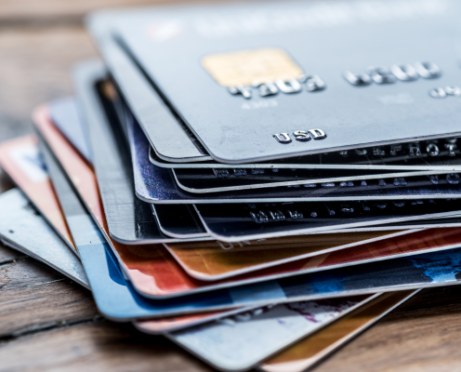
“I just never liked spending money I don’t have,” says Maggi Roque, a retired administrator for a medical transcription service in Palm Bay, Florida. “I know too many people in debt because it’s way too easy. By the time they realize they’re in over their heads, changing direction is rough.”
A debit card is essentially the plastic equivalent of an old-fashioned paper check, only more efficient and versatile. When you use a debit card, you’re tapping money that is already in your checking account. (There is an exception if you have an overdraft line of credit, which we’ll return to momentarily.)
Debit cards can be used at ATMs, in shops, and online to make payments and to get cash. Like their credit card cousins, debit cards have pluses and minuses, and it’s prudent to understand how they work and why people use them.
By the Numbers
One thing is very clear: Debit cards are popular. American consumers whipped out their debit cards 73.9 billion times in 2020, using them to withdraw cash or make purchases totaling $3.9 trillion, according to Statista.
Debit card transactions grew at a rate of 13.2 percent from 2019 to 2020, while credit card transactions fell 9.8 percent, according to the Nilson Report, a payment industry publication.
Debit cards accounted for 30 percent of all consumer payment transactions in October 2019, ahead of cash (26 percent), credit cards (24 percent), electronic payments (11 percent), and the rapidly vanishing check (5 percent), according to Federal Reserve data.
Debit cards are an excellent option for people who worry that putting expenses on a credit card can lead to overspending.
“It’s too easy to forget about the money you’re spending on credit and be shocked at your balance,” says Tracy Bahm, an attorney in Olympia, Washington. “After digging myself out of debt, I’m hoping to never do that again.”
How Debit Cards Work
The key distinction between debit and credit cards is simple: Debit cards tap your money. Credit cards let you borrow money. With a debit card, you can’t spend money you don’t have unless it is linked to an overdraft line of credit.
Superficially, debit cards may look like credit cards because in the United States, most of them are branded to one of the powerhouse credit card companies, MasterCard and Visa. But debit cards actually combine the features of two old workhorses of personal finance: the checkbook and the ATM card.
In fact, the growth in debit cards has coincided with a decades-long decline in check writing — which the Treasury Department accentuated in 2013 when it stopped mailing checks to Social Security recipients — as well as the virtual disappearance of old-school ATM cards, which could be used only to make deposits and withdrawals.
In fact, the Treasury Department uses MasterCard DirectExpress debit cards to deposit funds for people who don’t have bank accounts.
Your debit card enables you to make account withdrawals, deposits, and transfers as well as pay for goods and services, whether in person, online, over the phone, or with a mobile device.
If you are at a sales terminal, you will typically tap or insert your card, which is probably equipped with a smart chip known as an EMV chip — named for Europay, MasterCard, and Visa, the three global payment companies that developed it.
Sign Up in Less Than 2 Minutes
The funds are moved almost instantaneously; this means, however, you won’t have the advantage of the “float” that comes when you make a purchase with a credit card but don’t need to pay for it until after your next statement arrives.
When you get your debit card, you will be asked to set up a personal identification number, or PIN. You can use your PIN to perform transactions, but you also generally have the option to sign for your purchases, and that can be a good idea.
Signing for the transaction, or simply selecting “credit” or “enter” rather than choosing “debit” or keying in a PIN, routes it through a credit card processing network (Visa or MasterCard, depending on the brand of the card) and provides some additional protections against fraud.
Security Features of Debit Cards
The federal government has consumer protections in place for debit card fraud, and these are not identical to the rules for credit card fraud.
If your debit card is lost or stolen, it’s critically important to report it to your bank quickly. If you report it within two days of discovering the fraud, your liability for loss is capped at $50. If you wait up to 60 days, your liability rises to $500.
And if you don’t report it within 60 days of the statement on which the fraudulent transaction appears, your entire account balance could be at risk.
This cascade of consequences differs from the federal rules for credit cards, which cap losses for a reported fraud at $50, period.
Roque said she has had two experiences with fraudulent charges, including one instance in 2020. Both times, her bank handled the matter promptly, even though the rules allow several weeks to resolve fraud. “I called the bank, explained the charges were fraudulent, and I was good to go. Within three days, I had credit for the charges.”
Under federal regulation, the bank has 10 days to investigate fraud charges and refund your money.
It can extend the investigation to 45 days provided it gives a provisional credit within 10 days. And the bank can require you to put the claim in writing.
The national debit card brands, Visa and MasterCard, have long recognized that the discrepancy in fraud resolution rules could put debit cards at a disadvantage, so they have established zero loss protection policies that exceed the federal mandate.
It’s important to read the fine print on these policies to understand whether and how any losses you incur will be covered. Ask your banker whether there are specific actions that can protect you, such as signing for purchases rather than using a PIN.
Why Use a Debit Card
Some people use debit cards only for in-person expenditures. Some use them for online and other remote purposes as well. Some people set a threshold amount for using a credit card instead of a debit card. It’s an individual decision, but it helps to have some general principles in place to guide you on which card to use.
For instance, some people put only in-person expenses on the debit card and online expenses on a credit card. Some, like Katy Fontneau, a schoolteacher in Portland, Oregon, draw a size distinction: Small, everyday expenses go on her debit card; large, occasional, and unbudgeted expenses go on a credit card.
“I use debit for most daily expenses, and credit for big things, emergencies, or sudden big expenses,” Fontneau says. “If the refrigerator dies and needs replacing or the car gets an extended ‘vacation’ at the repair shop, I use a credit card.”
The small/large distinction is consistent with spending patterns observed by the Nilson Report. It finds that debit cards are used almost twice as often as credit cards, but the average purchase ($45) is about half of the average credit card purchase ($87).
One thing to keep in mind is that debit cards don’t offer one of the advantages of credit cards, which is the ability to build your credit rating. By the same token, they can’t affect your credit score negatively, in the way missed credit card payments can.
Debit Card Features
There are two features of your card that you should take pains to safeguard. The first is your PIN. The second is the three- or four-digit number known as the CVV, or card verification value. Don’t keep these numbers in a conspicuous place, and don’t share them.
When you choose your PIN, it’s very important not to use obvious digits, such as your birthdate or an easily guessed sequence such as 1-2-3-4.
Sometimes a checking account is linked to an overdraft line of credit. This can provide peace of mind — but it can also defeat the purpose of using a debit card if you’re trying to live within your means.
If you overdraw your account using a debit card and you have a line of credit, the bank will extend a loan to you, which then has to be repaid. You may also have to pay a fee or interest to cover the cost of a purchase or ATM withdrawal that exceeds what you have in your account.
Make sure you understand how your overdraft line of credit is structured for your debit card and what it costs to use it.
It’s also important to take some common-sense precautions with your debit card. If you’re going to use it online, for example, don’t do so using public Wi-Fi or a hotspot; wait until you are in a secure location, such as your home or office.
Make sure your antivirus software is up to date. Don’t use your card on a website that is unfamiliar to you. And don’t forget to sign the back of your card.
Until now, we’ve been talking about “general” debit cards, but they’re not the only game in town. Prepaid debit cards are a small but growing part of the payment landscape. Rather than drawing funds from a checking account, these cards have funds loaded onto them.
They can be useful for people who are just starting out and don’t have a checking account or need extra help with staying on budget.
The Bottom Line
Debit cards can be a great convenience and can help you steer clear of spending money you don’t have. Though they are easily mistaken for credit cards, that’s not what they are — and as long as you understand the differences, debit cards can play an important role in managing your money.









